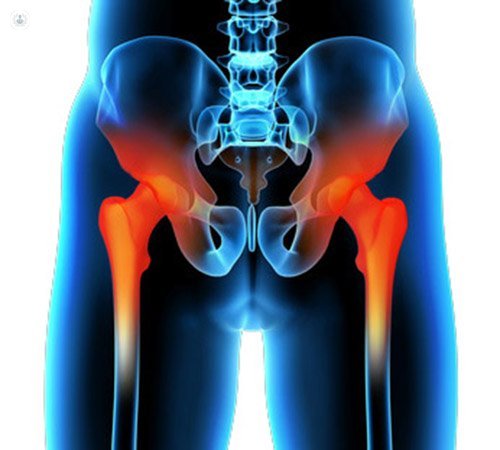Hip replacement surgery: a complete guide
Written in association with:Typically, pain due to a damaged hip is brought on by walking or bending and is felt in the groin and thigh. A careful assessment by an orthopaedic specialist is important to confirm the diagnosis and rule out alternative causes, such as problems with the back, abdomen or surrounding muscles

What happens during hip replacement surgery?
Total hip replacement surgery involves replacement of the femoral head and pelvic socket. Once the worn out head is removed, a replacement ceramic ball that is attached to the femur using a metal stem. The socket is then cleared of worn cartilage and bone and an artificial cup is inserted. A full hip replacement may be fixed in position either by using bone cement or a surface treatment onto which bone grows. The decision as to which form of replacement is most appropriate depends on the patients age, activity levels, bone strength and bone shape.
A hip replacement takes about 60 minutes. Usually, a full general anaesthetic is not required and a spinal anaesthetic is used to numb the legs and provide good pain relief after the operation.
Read more: Hip surgery in younger patients
Recovery time after total hip replacement surgery
The process of hip replacement recovery is quite variable, but most people are able to take a few steps on the same day as surgery. Usually a walking frame is needed for the first day and then crutches for about two weeks. Most patients stay in hospital for 3 nights, although less fit patients or those who live alone may need a little longer. Patients tend to report moderate pain and require regular pain-killers for the first two weeks or so.
How can the risks of surgery be minimised?
The vast majority of patients experience no problems and tend to be extremely pleased with the outcome of hip surgery. Although every effort is made to make surgery safe and easy to recover from, hip replacement complications can happen. It is important for patients to discuss possible complications carefully with their surgeon as their age, fitness and the condition of the hip joint can affect the risk.
A smooth and uncomplicated recovery is more likely if the patient is in the very best possible physical condition before surgery. Starting a light exercise program the month or so beforehand can help to build muscle strength and make getting back “on-track” much easier in the days following surgery.
Read more: preparing for hip surgery
Long-term health conditions such as diabetes or high blood pressure must be checked carefully and brought under optimal control before hip joint replacement. Smoking should be stopped and alcohol intake should be minimal in the weeks preceding surgery. Patients should also not shy away from directly asking their surgeon about their level of experience (ideally preforming at least 50 hip replacements per year), how they monitor their own results and what the scientific evidence is to support the replacement implant they propose to use.
What are the alternatives to surgery?
For many people, surgery is not required and a combination of weight-loss, activity modification and pain-killers may be all that is needed to relieve hip pain. It is of course the case that many people with arthritis find it difficult to lose weight. Similarly, although sometimes helpful, long-term use of pain-killers may cause side-effects and there are some risks. Physiotherapy and a moderate non-impact exercise program can help to strengthen the muscles around the hip that often become weak. A steroid injection into the hip joint can sometimes be helpful, though the benefit only tends to last for a few months.


